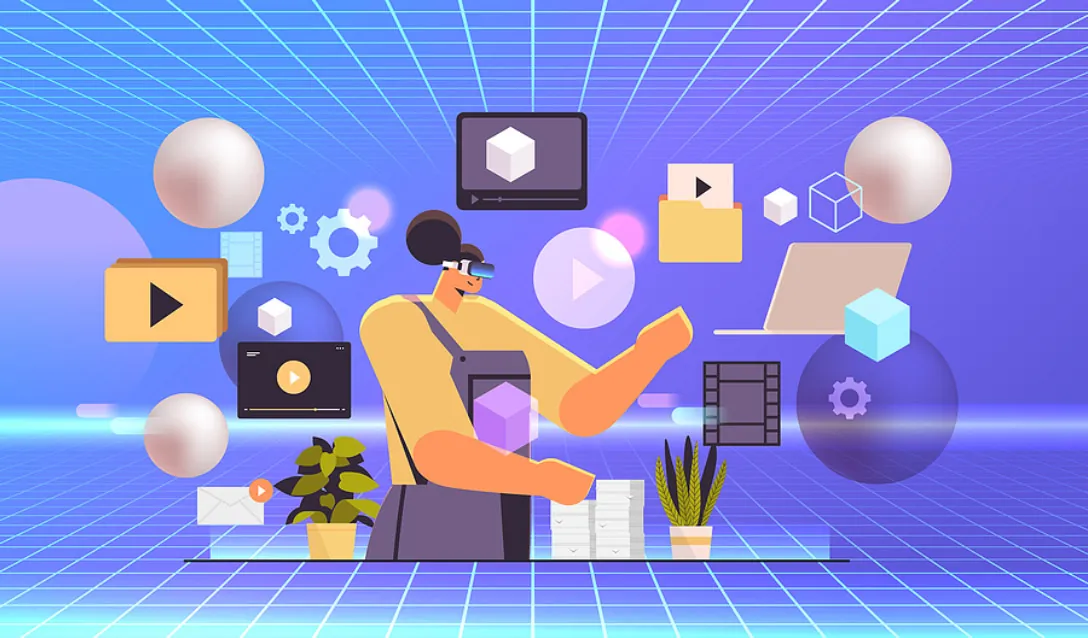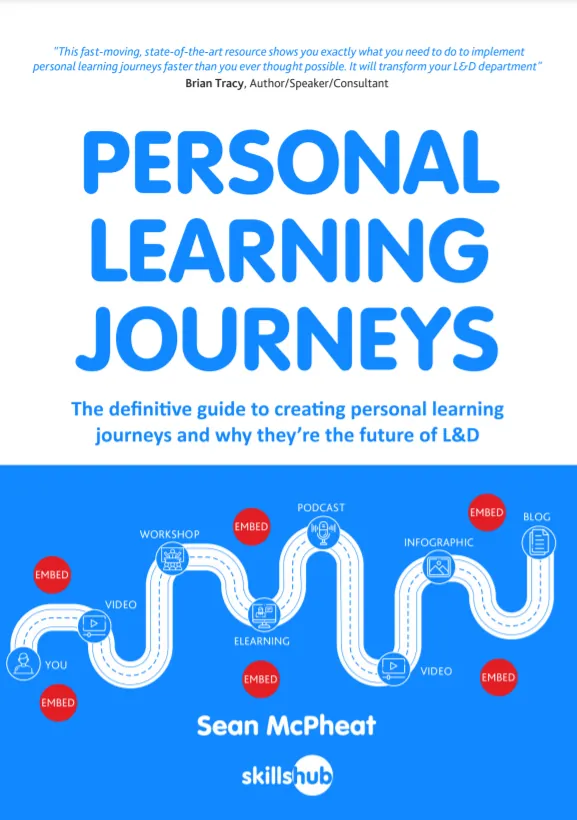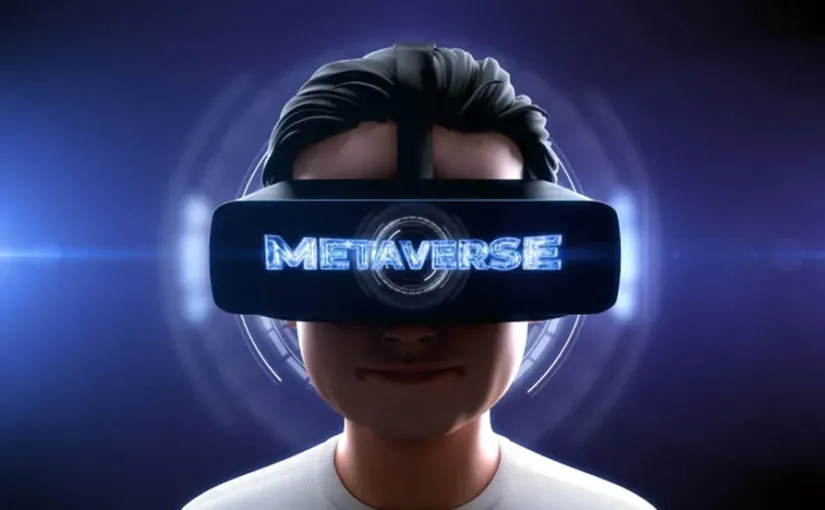
As we navigate the transformative world of learning and development, immersive learning has become a critical component to enhancing training effectiveness.
This approach, which seamlessly blends reality and digital elements, not only amplifies engagement but also fosters a deeper understanding.
Let’s take a look at the full potential of immersive learning, whilst equipping you with a suite of practical strategies to transform your training programmes into dynamic, interactive and deeply impactful experiences.

Understanding Immersive Learning
Let’s begin with some immersive learning basics, including a simple breakdown of the meaning of this type of learning and an overview of its benefits in employee training.
Definition and Overview of Immersive Learning
Immersive learning uses virtual reality (VR) to mimic real-life scenarios and train employees in a safer and more engaging way. For example, customer service employees may wear a VR headset during training to learn how to navigate everyday customer interactions.
Along with VR technology, immersive learning also incorporates additional solutions like augmented reality and 360-degree videos, as well as elements of advanced learning theory, data science, and spatial design.

Learn How To Create Personal Learning Journeys For FREE!
Importance of Immersive Learning in Training
One of the most significant strengths of offering employees an immersive experience is that this approach is built on extensive neuroscience research.
This research suggests that the brain responds to VR experiences the same way it would in real-life ones. As a result, the skills developed in a virtual environment translate well to the actual work environment an employee will enter when they complete training.
Not only are VR and other types of immersive learning technology practical, but they also increase safety and allow employees to develop their skills without the risk of hurting themselves or others.
Immersive Learning in Learning and Development
Immersive learning technology is revolutionising the learning and development sector. Employers across all industries can utilise it to train team members, improve continuing education efforts, and achieve better learning outcomes.
Types of Immersive Learning Experiences
Employers can incorporate immersive elements into their training programs in various ways, including the following:
- Creating Engaging Scenarios and Simulations: Immersive learning engages multiple senses, creating opportunities for employees to see, hear, and interact with various situations and scenarios – including those they are most likely to encounter on the job.
- Incorporating Virtual Reality (VR) and Augmented Reality (AR): Virtual reality and augmented reality are two of the most popular immersive learning experiences employers can offer employees. Virtual reality takes the learner into an alternate digital world, whereas augmented reality blends the real world with unique digital eLearning content. Both options create opportunities for team members to learn in a more hands-on way without putting their safety (or the customers’ safety) at risk.
- Interactive Storytelling and Gamification Techniques: Another way that immersive learning increases engagement with learning is through storytelling and gamification. Storytelling naturally encourages employees to stay focused and follow along throughout the training sessions. Gamification, on the other hand, boosts motivation and gets team members even more involved in their learning and development courses.


How To Incorporate Immersive Learning
Many employers are intrigued by the idea of immersive learning tools like AR and VR. However, they’re unsure of how these solutions can fit into their organisation and training protocols.
Do you want to enhance your employees’ personal learning journeys with immersive learning but aren’t sure where to begin? In that case, the guidelines discussed below can help you effectively incorporate them into your company’s training processes.
Implementing Immersive Learning
To implement immersive learning effectively into company training programs, employers should prioritise the following:
- Selecting the Right Platforms and Devices: When choosing immersive eLearning platforms and devices, employers should consider factors like the subject matter (is it appropriate for their specific workplace?), user-friendliness (is it easy for employees to navigate the platform and participate in the training courses?), and personalisation options (can training sessions be tailored to help employees identify and improve on specific weaknesses?).
- Integrating Immersive Learning into Existing Training Programs: Employers don’t have to completely overhaul their entire training program with AR and VR technology. A more cost-effective approach (that also allows employees to get comfortable with new tools gradually) is to integrate immersive learning into an existing program. For example, they might use AR/VR gamification solutions as an alternative to traditional learning assessments.
- Collaborative Learning and Social Interactions: It also helps to incorporate immersive learning alongside collaborative and social situations. Giving employees a chance to work together while using AR/VR technology creates additional opportunities for relationship-building and allows them to learn from each other.
Enhancing Learning Outcomes with Immersive Learning
Remote learners, in-office employees, and hybrid workers can all benefit from immersive learning. To see the best outcomes, employers should keep these suggestions in mind:
- Active and Experiential Learning: Use tools like AR and VR to provide employees with active and experiential learning opportunities. For example, employees who need first-aid training can use VR to simulate an emergency situation in which they might need to perform CPR.
- Improving Knowledge Retention and Transfer: Interactive elements like quizzes, surveys, and polls allow employees to test their knowledge along the way. They also help instructors and supervisors to understand whether or not a particular tool is working to help them achieve specific learning outcomes.
- Developing Critical Thinking and Problem-Solving Skills: Immersive learning should help employees strengthen their critical thinking and problem-solving skills. One way to ensure this happens is to introduce them to a variety of scenarios that require them to think on their feet, choose between different tools or strategies, and explain why they made a particular choice.
Assessing and Evaluating Immersive Learning
How can employers know if immersive learning is or isn’t working for their team members? Here are a few assessment and evaluation tips:
- Measuring Learning Effectiveness: Data gathered from quizzes, polls, and surveys helps employers to measure learning effectiveness and determine whether or not a particular immersive learning tool benefits their team. They can also compare this data to the results from past learning and development courses to see if immersive learning produces better outcomes.
- Gathering Learner Feedback and Performance Data: It also helps to hear from the learners directly. Ask them what they thought of the immersive learning options and what they would like to see changed in the future. This information, combined with performance data, provides a more well-rounded picture of the solution’s effectiveness and whether it’s a good option to continue using.
- Iterative Improvement of Immersive Learning Experiences: Data and feedback help employers make iterative improvements to the immersive learning experience. In other words, they can use information gathered from the first round to refine the approach and make it better for the next group of trainees.


Benefits of Immersive Learning
One of the greatest benefits of immersive learning, as we mentioned above, is that the brain responds to this type of training the same way it does to real-life events. However, the immersive approach is much safer for everyone involved.
The following are some additional benefits of AR and VR immersive education:
- Allows employees to learn by doing rather than simply listening to a lecture or watching a video
- Creates a distraction-free learning environment
- Allows ample opportunities for practice
- Keeps employees safe as they learn new skills
- Makes it easier for employers to monitor performance and track progress/results
It’s also easier to tailor immersive learning to each trainee’s unique needs and offer a more personalised approach, which sets team members up for better outcomes and long-term success.
Limitations of Immersive Learning
Like any training modality, immersive learning is not without its limitations. Here are a few potential drawbacks to keep in mind when considering incorporating VR, AR, or other technologies into your training:
- Higher upfront costs may preclude some employers from investing in immersive learning tools
- Employers may struggle to afford the equipment and other resources needed to provide effective immersive education
- Some instructors may be hesitant about using immersive technologies and will need additional convincing to adopt new solutions.
- Employers must prioritise employee comfort and safety by ensuring trainees have the appropriate accommodations before using immersive solutions.
The success of immersive learning tools also depends on the tools themselves. Employers must take care to choose well-designed solutions with excellent UI/UX design for the best results.


Future of Immersive Learning
The use of immersive technology in eLearning content development is only going to become more prevalent in the coming years. Below are some examples of how immersive learning may evolve moving forward, plus predictions for the future.
Emerging Technologies and Applications
The world of immersive learning is growing and evolving rapidly, with new opportunities popping up every day for employers to incorporate it into their training programs. The following are some of the latest examples of immersive learning technologies and applications:
- Augmented Reality and Virtual Reality: Augmented reality and virtual reality can be used to train employees in numerous fields, from surgery and emergency medical services to firefighting and aviation. AR and VR have become much more sophisticated in the coming years, providing more realistic training scenarios that better equip learners for the challenges of their careers.
- Microlearning: Immersive learning lends itself well to microlearning, which involves breaking lessons into smaller chunks to improve understanding and learning retention. This approach is particularly beneficial for younger generations (including Gen Z and Gen Alpha), as well as other learners who struggle with shorter attention spans.
- Artificial Intelligence: Artificial Intelligence (AI) allows for greater personalisation. It can adjust lessons, as well as assessment tools, based on employees’ previous responses or actions, giving them more opportunities to increase understanding and achieve the desired outcomes from the training program.
- Mixed Reality: Mixed reality incorporates elements of VR, AR, and other technology to create a more expansive set of learning opportunities. Mixed reality can also help employees to communicate and collaborate with each other, allowing them to build stronger relationships and make faster, more meaningful progress.
- 360-Degree Videos: 360-degree videos use omnidirectional cameras to share views from all directions. This option allows employees to experience various situations and gain a better understanding of different environments, products, equipment, etc.
- Adaptive Learning: Adaptive training and learning combine artificial intelligence with other solutions to help employees learn at their own pace. The training solutions adjust to their needs and ensure they receive sufficient support throughout the process.
Predictions
The future looks bright for immersive learning. Here are a few future predictions for this technology:
- Immersive learning for soft skills development: Currently, most people think of immersive learning and its benefits for developing hard skills (using new equipment, performing specific tasks, etc.). However, in the future, it will likely be used more frequently for developing soft skills (communication, leadership, teamwork, etc.). Improvements in hard and soft skills allow for more well-rounded employees who can produce better results for their employers and superior service to customers or clients.
- The Metaverse and Web 3.0: Although the Metaverse and Web 3.0 are still in development, it’s almost certain that immersive learning solutions like AR, VR, and AI will be critical elements. The more comfortable employers and employees are engaging with these elements, the better equipped they will be to navigate new frontiers.
- Employee upskilling: Employee upskilling can help employers to increase productivity and performance despite potential hiring challenges (such as the ongoing labour shortage). Immersive learning gives employees opportunities to develop the hard and soft skills needed to transition to different positions, carry out new responsibilities and more.
Final Thoughts
Immersive learning technologies are exciting advancements that can significantly enhance your employee training process.
Although there may be some initial hesitance from employers and employees about using these tools, most will find that they allow for greater engagement, safety, and progress monitoring — as well as better learning outcomes across the board.
In the coming years, the popularity of immersive learning, particularly in employee training and learning and development, is expected to grow. Employers can use the guidelines discussed above to ensure they’re selecting the right solutions and helping team members utilise them properly.
As an eLearning company, Skillshub is committed to creating efficient and impactful learning experiences.
Contact us today to learn more about Skillshub’s immersive learning offerings.














